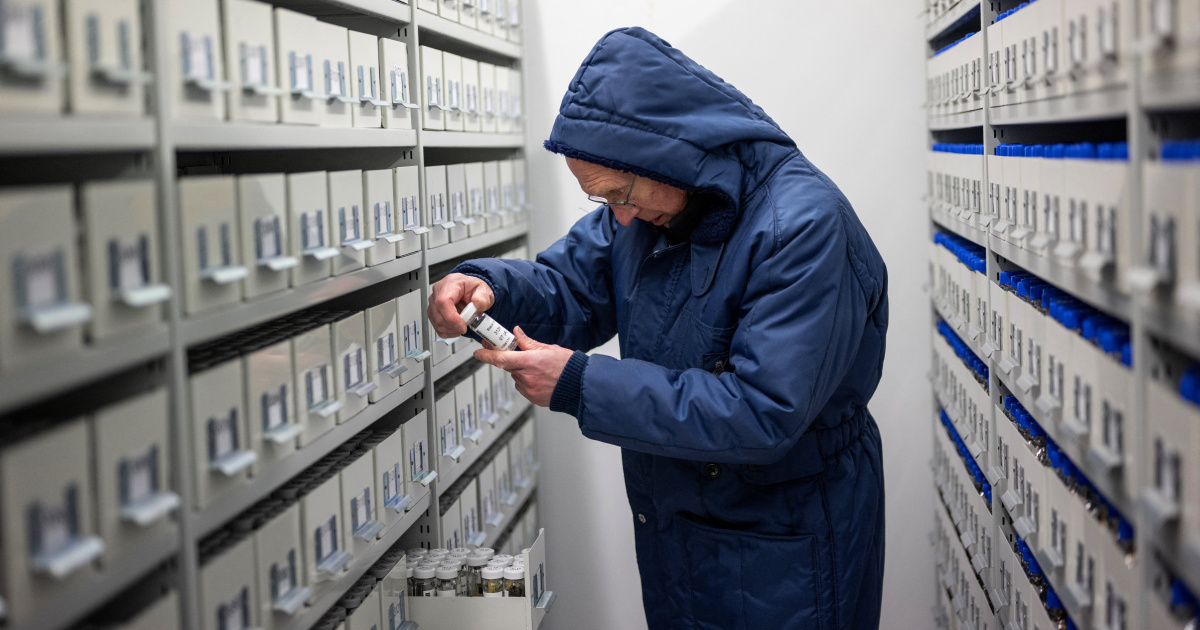The vaults are underground, in the English countryside, at 20 degrees below zero. They can withstand floods and bombardments and save treasure trove consisting of the seeds of 40,000 plants wild worldwide, many of them in danger of extinction.
The Millennium Seed Bank (MSB) is in a race against time because, according to scientists, two out of five plant species on the planet are threatened with extinction.
This centre, located south of London, is the largest seed bank in the world. According to biologist David Attenborough, a very well-known figure in the UK, MSB is “probably the most important conservation initiative ever undertaken». “The goal is to conserve wild species through seed, to prevent extinction in the long term,” explained John Dickie, project manager.
The 70 year old researcher has been involved with MSB since its founding in the late 1990s. It opened in 2000 to celebrate the millennium and is located in Wakehurst, a branch of Kew Gardens in London.
Here are kept a few 2.5 billion seeds. They come in all shapes, colors and sizes. They belong to 40,020 different species and come from 190 countries. They represent almost 20% of the world’s flora.
Priority is given to crops that are threatened, especially by climate change. But also endemic plants that can only be found in certain geographic areas.
Plants that are of medical or economic benefit to society also have a place in Wakehurst. «Plant species are threatened for many reasons (…), but mainly because of changes in land use for agriculture and, increasingly, because climate changeDick explained. “Some plants will adapt, some won’t,” but “at least they’ll be here, rather than disappearing altogether,” he added.
Floods, bombings, radiation
Every week Wakehurst receives new seeds and begins the process of saving them. “Our conservation of wild species is based on technology that has been used for farmed species,” explains Dickie. “It’s not complicated: they’re drained, cleaned, and frozen.”
Once frozen, the seeds can stored for decades, maybe centuries, he said. His team works in public in their glass-enclosed laboratory in Wakehurst. There are about 20 researchers and several volunteers.
Lucy Taylor treats seeds albasian polyphile, arrival from Madagascar. “Madagascar is a very interesting place for biologists because it has a unique flora, since the island broke away from Africa. Also, there is a lot of pressure on the land” because of agriculture, he explained.
With patience, he separates the seeds that are in bad condition from the others: «many are empty or infested with insects or disease (…), but we want to best possible collection and we don’t have much space in our room.”
To detect the disease, the seeds are X-rayed. Each of them has their own identity card, with name, country of origin and date of arrival at MSB. They were stored in glass jars before being frozen in the cellar, built to withstand flooding, bombing, and radiation.
The temperature is -20ºC. The scientists entered them dressed as if they were working in a polar base. The largest collection of seeds according to the orchid family. There are also rare plants, such as the world’s smallest water lily or tea Antarctic deschampsiaalso known as Antarctic hair grass, any of two flowering plants native to the South Pole.
MSB, which receives public funds and donations, cooperate with 90 countries. Some, like Indonesia, refuse to share their seeds with the agency, but keep them in their territory. Others, however, seem out of reach: One of Dickie’s few regrets is not making an exchange with Iran.

“Entrepreneur. Internet fanatic. Certified zombie scholar. Friendly troublemaker. Bacon expert.”







